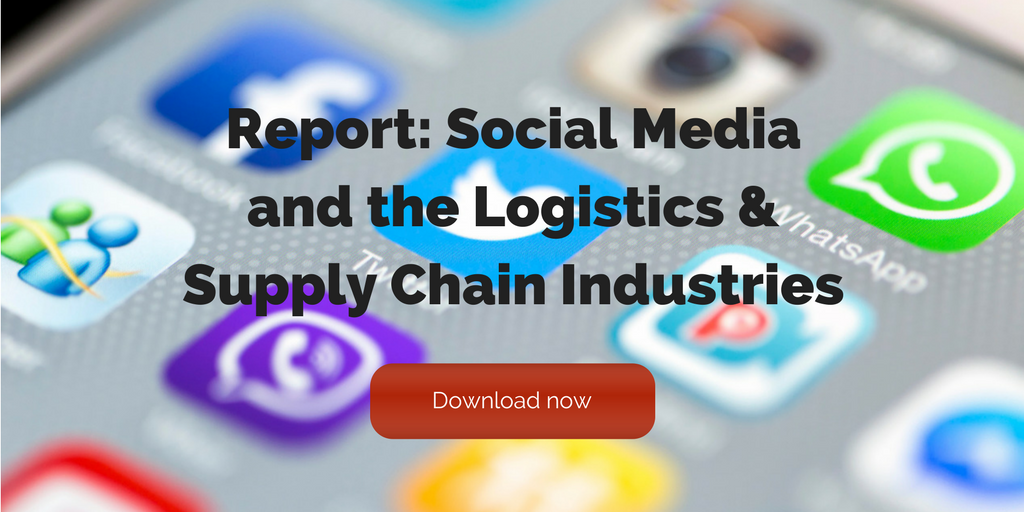
by Fronetics | Dec 6, 2017 | Blog, Current Events, Marketing, Social Media
The increasing popularity of chatbots is making it harder to ignore how artificial intelligence is helping shape the content marketing landscape.
Chatbots are the latest trend in artificial intelligence for marketers, and the supply chain and logistics industries should take note.
Chatbots can help automate and improve some of your marketing and customer service efforts. But to get the most out of these automated systems, you first must understand what they are and how they work.
What is a chatbot?
A chatbot is s a computer program that simulates human conversation using auditory or textual methods. Basically, it’s software that communicates with your customer inside a messaging app, like Facebook Messenger. Chatbots are similar to email marketing, but, instead of ending up in your inbox, they communicate through a messaging app.
Why are chatbots so popular?
As our mobile devices continue to change the way customers receive and interact with our brands, messaging-app usage has skyrocketed. In fact, 2017 saw a 69% increase in messaging-app users from last year. Business Insider reports the number of people on messaging apps surpassed the number of users on social networks. From iMessage to Facebook Messenger, mobile users are leaning more toward this newer technology to communicate with friends and family.
Why the big drop from email? Because people are buried in emails. On average, office employees receive 121 emails per day. Of those 121 emails, only around 20% are opened — and click-through rates are even lower. More and more companies have stuffed inboxes with repeated emails. Over-communication is the number one reason for readers’ unsubscribing to your email list. Chatbots have alleviated the inbox drama.
Why does my business need a chatbot?
Quality messaging without the spam
Chatbots take the spam out of email marketing. When companies market on a messaging app, they create an easier way for leads to receive educational messages about their brand. Chatbots are an easy and fun way for audiences to engage with your brand, getting answers to their questions and quality messaging about your products and services.
Ease of tracking and segmenting
Your brand will also appreciate the ease of tracking and segmenting your customers through chatbots. Take Facebook Messenger for example; using messenger bots, you can identify who your customers are in less than a minute. No other platform (email, social media) can get you that information as quickly or efficiently.
Increased customer engagement
Getting customers to subscribe to your chatbots is much easier than email subscriptions. Why? The ease of usage and lack of friction on messaging apps creates a more positive customer experience. Businesses can set up chatbots to message any user who comments on your social media pages. They can retarget people who have left your site, offering special discounts or promotions if they place an order. And chatbots can also nurture the sales process by notifying you of potential customers that request a specific action during their interaction with your chatbot.
How do I create a chatbot?
There are plenty of chatbot-building platforms available online. Before you pick a platform, make sure you do your research. Here are three of the top chatbot building platforms.
1. Chatfuel
This chatbot engine will do most of the hard work for you, ideal for those lacking programming experience. MTV, TechCrunch, BuzzFeed, British Airways and Adidas are said to have used Chatfuel to create their chatbots, along with almost 20,000 other users across the globe. The user interface is easy and slick, meaning you could create a chatbot in less than 15 minutes!
2. Chatscript
Launched back in 2011, ChatScript is a ‘next generation chatbot engine,’ which has won the Loebner Prize (awarded for the most human-like examples of artificial intelligence) four times. It provides an open source framework for developers to build and deploy chatbots.
3. Facebook ‘Bots for Messenger’
At its F8 developer conference in April, Facebook launched Bots for Messenger, a tool which allows developers and businesses to build chatbots for its Messenger platform (which is used by almost a billion people). Developers build bots, submit them for review, and then Facebook decides which get onto Messenger. The three main capabilities are its send/receive API, generic message templates, and the ability to customize the welcome screen users first see when interacting with your bot.
Messaging automation is the new email automation. Brands will be looking to join the chatbot craze for the ease, convenience, and the positive customer experience. Have you tried a chatbot program yet? We’d love to hear from you about your experience.
Related posts:


by Fronetics | Dec 5, 2017 | Blog, Content Marketing, Current Events, Logistics, Marketing, Supply Chain
Companies in the supply chain and logistics industries should take note of these 4 trends that are gaining traction as we move into 2018.
Joe Pulizzi of the Content Marketing Institute recently revealed his predictions for the biggest trends in content marketing for 2018. As the founder of CMI, Pulizzi dedicates his time discussing how content marketing has evolved with leading marketers from around the world and keeps his finger on the pulse of content marketing trends.
Most of the predications we discussed for 2017 are still holding true as we roll into another calendar year. Supply chain and logistics companies are still working overtime to nail down a true content marketing strategy. Native advertising is still the “gateway drug” to content marketing. And the growing dependence on mobile devices has continued to skyrocket.
What does this mean for 2018?
The key trends from 2017 continue to highlight the importance of good content. With over one million new-data-producing social media users each day, high-quality content is the only way to stand out from the masses. As you start to strategize for next year, and beyond, be sure to consider these trends in your supply chain marketing plans.
4 content marketing trends for 2018
1. Original content is king
A recent report claims that Apple is planning to invest over $1 billion on original content. Why the hefty price tag? As competition in the mobile space continues to heat up, brands need to do more to stay relevant. Valuable, original content can help companies like Apple grow its audience and keep its current customers coming back for more.
What does this mean for you? Pulizzi believes that this trend will offer companies multiple options to monetize their content. Either through direct sales to customers or advertising and sponsorship opportunities, supply chain and logistics companies will be able to cash in on their original content.
Make sure to keep a close eye on your competitor’s content. More and more companies will see the value in original content and look to build loyalty and support from their growing audience.
2. Creating vs. purchasing
For those supply chain and logistics companies that don’t have the time or resources to invest in creating original content, acquisitions will offer a pricey solution. 2018 will see a spike in content marketing brand acquisitions, giving companies full-service content options. Back in August, Netflix acquired Millarworld, a comic book publisher, hoping to gain traction with cutting-edge content in a host of different mediums.
While 62% of companies outsource their content marketing, the rise in acquisitions highlights the value of content creation and distribution. The decision to create content vs. buy will depend on the size of your wallet.
3. Content marketing budgets on the rise
According to Marketingmag.com, content marketing will become a $300 billion industry by 2019. That’s a lot of money being spent on content creation and distribution, which can only mean one thing: content marketing budgets are increasing. 39% of marketers expect their content marketing budgets to increase this year.
More brands are seeing the effectiveness of content marketing over traditional advertising. Moving away from traditional advertising and optimizing your content marketing strategy will make your marketing budget dollars stretch further and work harder in getting your content in front of the right people.
4. Content marketing overlap
Many of us are familiar with Marcus Sheridan’s story about the success of his pool company and starting the Sales Lion. Desperate to save his company, Sheridan threw himself into content marketing and created the most-visited swimming pool website in the world. Sheridan’s biggest take away? Marketing is a team sport. “Want content marketing to work? Involve everybody on your teams,” writes Sheridan.
Content marketing doesn’t work in a silo and without leadership. For content marketing to be most effective, leaders need to give clear ownership to someone over your content marketing strategy. From there, everyone needs to get on board, creating a culture of content. Your sales teams should integrate your content marketing into their sales processes. Your PR team should meet regularly with your social media experts.
“To say you have a culture of content is to say that everyone who works for your company understands the value of the information you provide and participates in making that information useful,” writes Marcia Reifer Johnston.
Overlap is bound to happen in your content marketing endeavors. The key is to have clear leadership over your strategy and regularly communicate your goals and initiatives, so your entire team can be engaged in your efforts.
Related posts:


by Fronetics | Dec 4, 2017 | Blog, Leadership, Strategy
Making the shift from doing to leading can be challenging for any supervisor, but great leaders need to master the skill of delegating.
Delegating is a true skill set. Some leaders find it very difficult to let go of the control over daily tasks. They spend their time focusing on mundane details, instead of passing the work to their qualified team members.
To be an efficient leader, you must develop the skill of moving tasks off you plate. Delegating is a great way of encouraging your team members and creating new opportunities for their professional growth and development.
“True organizational productivity requires engaged, informed personnel willing and eager to work toward the organization’s mission and vision. And it all starts with a simple concept that’s amazingly hard for some people to implement: letting go of control,” writes Laura Stack for Vistage.com.
And though letting go of control can be very difficult, the increasing pressure of having all the responsibilities fall on you can have major impacts on the quality of your work. If delegating doesn’t come naturally to you, practice! In a recent article in the Harvard Business Review, Director in PwC’s Leadership Coaching Center of Excellence Jesse Sostrin suggests three practical tips for easing into the art of delegating.
3 tips to master the skill of delegating
Choose the right people
If you want to save time and focus on leading your staff, you need to have a strong team behind you. A large part of feeling comfortable delegating is having trust in the people that support your efforts. Knowing you have smart, capable team members allows leaders to be confident in the work that’s taking place. To get the most out of delegating, set up a reporting structure and make it known that you’re available for help. Then step back and give your team the space to do their jobs.
Inspire their commitments
Fully committed team members understand how their work is contributing to the big picture. “Once you’ve defined the work, clarified the scope of their contribution, and ensured that it aligns with their capacity, carefully communicate any and all additional expectations for complete understanding. This is crucial when you have a precise outcome or methodology in mind,” writes Sostrin. Make your expectations challenging, yet achievable. And always keep your door open. Open lines of communication are key in ensuring your team understands your expectations and is committed to the work.
Stay engaged, but not involved
Being too involved can lead to micromanaging. Being too hands-off can lead to missed opportunities to offer support and help. Finding the balance between the two is crucial in being an efficient delegator. You need to find the spot where you can offer support but give your team the space they need to feel confident in their own abilities. Not sure where that sweet spot is? Ask! Some employees will appreciate a little more guidance, where others will want to figure it out on their own. As you practice delegating, you’ll get to know your team better and learn the best ways to support them. And never shy away from sharing praising when a task is done correctly.
Delegating is a must for saving time and money in any office. However, delegating is much more than just assigning tasks. When done correctly, it creates opportunity and empowerment for your staff, as well as yourself. It will take a bit of practice, but it’s never too late to start mastering new skills.
Related posts:


by Jennifer Hart Yim | Nov 30, 2017 | Blog, Leadership, Strategy
More and more companies are leveraging digital technologies to keep extra tabs on their employees, both in the office and at home.
This guest post comes to us from Argentus Supply Chain Recruiting, a boutique recruitment firm specializing in Supply Chain Management and Procurement.
As part of our efforts to chronicle the ways the workplace is changing, we recently wrote about how more companies are adopting formal work from home policies. More organizations realizing that these policies – and other alternative working arrangements – can help them attract and retain top talent in a thriving job market. Working arrangements are becoming more flexible, but today we wanted to write about another countervailing trend.
The rise of digital communications (and applications like Skype, Google Docs, and Slack) has enabled work from home policies that let workers collaborate in real time across big geographic distances. Now, an article in the Guardian by Olivia Solon details how more companies are leveraging other digital technologies to keep extra tabs on their employees, both those who work in the office and those who telecommute.
Companies have long monitored their employees’ email, and blocked certain websites from company networks (as well as, of course, monitoring their physical presence in the office). But Solon writes about how more and more high-tech pieces of software are encouraging companies to monitor their employees’ screens, keystrokes, social media posts, private messaging, and even face-to-face interactions. As Solon puts it, “today’s workplace surveillance software is a digital panopticon” that makes employees assume they’re being watched so that they’ll stay on task and avoid any kind of distractions.
(For those who don’t know the reference, the Panopticon was an architectural design for a prison made by philosopher Jeremy Bentham in the 18th century in which a central guard tower, shadowed under darkness, kept watch over a circle of inmates who weren’t able to see at any given moment whether they were being observed.)
These technologies include Crossover’s WorkSmart, which bills itself as a “Fitbit for how you work” and offers managers a numerical score after measuring employees’ keystrokes. It also uses remote employees’ webcams to take photos of them every ten minutes and make sure they stay on task. Another technology named “Wiretap” – charmingly enough, for employees who don’t see themselves as criminals – measures the number of emails an employee sends, the number of times they open documents, the programs they use, and their keystrokes, alerting supervisors about any deviations from their normal numbers. Teramind, another employee surveillance solution, measures the amount of switching between applications that employees are doing, supposing that a high amount of switching signals a distracted employee who needs to be reprimanded. Another service, Qumram, monitors employees’ personal devices, including messaging apps like WhatsApp, to make sure that they aren’t discussing anything untoward.
It’s a new level of penetration into employees’ activity and private lives, and it all raises some interesting privacy and employee management issues. On the ethics front, it kind of comes down to this: does the idea of your employer taking a picture of you through your webcam every ten minutes give you the creeps?
Everyone has different opinions about the privacy aspects of these technologies, and whether it’s good for employees’ mental health to have all their computer activity monitored. But we’re interested in discussing these technologies from an employee management perspective:
From our perspective, what’s dangerous about this isn’t necessarily the technology itself – and believe us, it’s truly disconcerting to see one of these app’s founders literally saying “big brother is watching you,” (seriously, read the article!). But from our perspective, the issue is really the larger ethos of extreme micromanagement that this technology serves.
It’s reasonable for companies to want to protect their data. It’s fair for them to want to keep an eye on what their employees are doing – they are the ones paying for the time, after all. But the idea that an aggressive focus on every keystroke is going to improve white-collar productivity? To us, that’s specious at best. From our perspective, companies thrive when they trust their employees. They succeed when they grant them the autonomy to go above their “assigned duties” to find new projects, new lines of business, and new efficiencies – not when they obsessively monitor them to ensure those duties are being carried out.
Micromanagement often leads to loss of trust, a dearth of creativity, burnout, and high employee turnover. Is all of that worth it for the opportunity to catch an employee “stealing” ten minutes of the day to check social media, or use the bathroom if they’re working from home?
In our opinion, it’s not.
It’s telling that a lot of these software solutions use language that treats employees like children or criminals. Solon quotes the CEO of Awareness Technologies, who says “if you are a parent and you have a teenage son or daughter coming home late and not doing their homework, you might wonder what they are doing. It’s the same as employees.” Is it? Employees are people that you’ve vested with your trust. They’re people you’ve specifically hired because of their skills and creativity. They’re the critical success factor to your organization. So why should the assumption be that they’re up to no good? Isn’t it better to hire with trust in mind, and measure results to see if each employee deserves that trust?
The evidence is pretty clear that companies innovate when they treat employees like adults. Is it a coincidence that some of the most innovative companies in the world, including Google, Uber and 3M offer employees enough freedom at the office to work on non-assigned projects, and even nap?
There are legitimate reasons for this kind of surveillance: in parts of the financial industry, these solutions can prevent insider trading. They can also help monitor sexual harassment and inappropriate behavior. When you’re talking about management style, a certain amount of micromanagement is inevitable, even warranted. But in our opinion, these kinds of total digital employee surveillance schemes will most likely result in an atmosphere of fear and distrust in the workplace, which is the opposite of a productive environment.
But what are your thoughts? Do these heightened employee surveillance systems encourage excessive micromanagement, or do you think they stand to make workers more productive? We’re open to all perspectives and experiences. Let us know what you think in the comments!
Related posts:


by Fronetics | Nov 28, 2017 | Blog, Manufacturing & Distribution, Marketing, Social Media, Supply Chain
Manufacturers who are active and engaged on Facebook are more likely to introduce product innovation than those who are not.
If you’re killing time during business hours on Facebook, you may actually be onto something valuable. Well, no, — scrolling through your sister-in-law’s vacation album is unlikely to help your business. But recent studies show that staying attuned to user feedback on Facebook may actually help manufacturers create better products.
The practice in question, social listening, is the process of monitoring social media to identify and assess what users are saying about a company, individual, brand, product, or service. We’ve written about how social listening can help your business — you can gain market intelligence and learn how your company, products, and services are being perceived.
But two researchers from the Centre for European Economic Research (ZEW) have taken things a step farther. They studied data from nearly 3,000 German manufacturing and service firms to analyze the role that Facebook plays in the innovation process. What they found was that the probability that a company introduced a product innovation was significantly determined by firms’ adoption of a Facebook page and by the activity by users, measured by both quantity and quality.
The researchers, Irene Bertschek and Reinhold Kesler, discuss their findings in detail in this article published in the Harvard Business Review. So you can skip to the bottom line, we’ve pulled out a few key takeaways for manufacturers:
Negative comments are your friend…
…if you take them seriously.
While you might cringe when you seed a negative customer comment on Facebook, what the researchers found was encouraging: “Surprisingly, only the share of negative user comments was significantly predictive of innovation, perhaps suggesting that customers were helping to steer companies away from bad ideas.”
To make this work for you, it’s important that you pay attention to negative reviews, actively engage with them, and pass along relevant information to the people within your company who can address the issues. For more ideas, check out this post for tips on dealing with negative customer comments.
Simply being on social media isn’t enough — you need to be actively and intelligently engaging.
The study found that companies who were “using keywords in their posts that encourage users to leave feedback were significantly more likely to release a new or improved product.”
In other words, to gain the kind of valuable feedback that allows your products and services to improve, you need to be intelligent about soliciting it. “When developing social media strategies,” suggest Bertschek and Kesler, “companies should not only focus on marketing aspects, but also consider the potential for the firm’s innovation success.”
Related posts:








